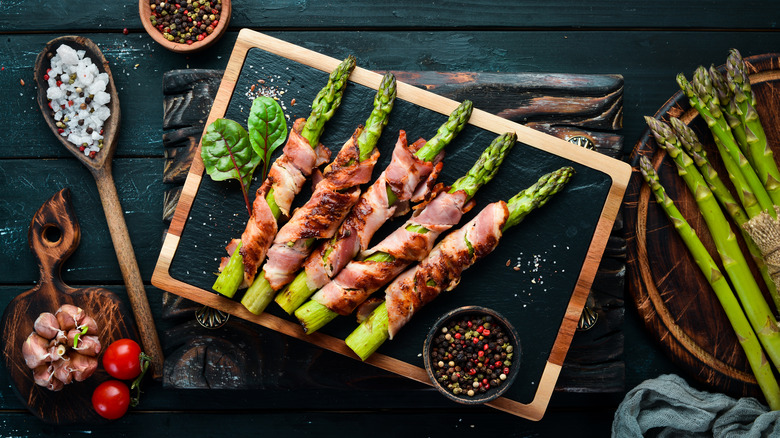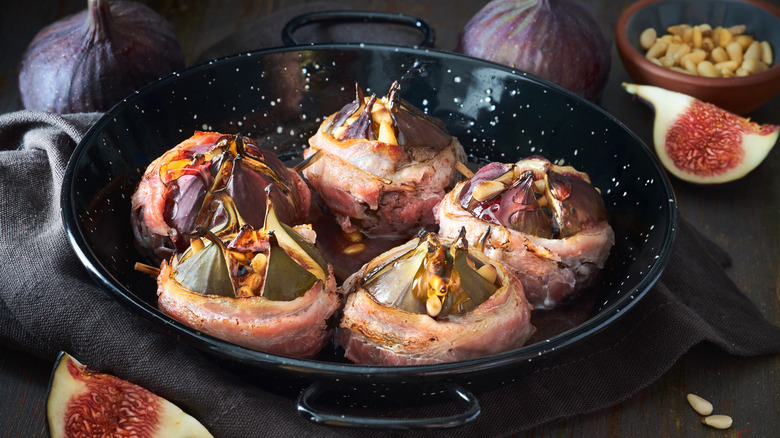Why You Should Par-Cook Bacon For Some Recipes
When you think of bacon, do you hear the crack and sizzle of it on the stove? People have been enjoying the classic sound of frying this tasty protein since 1500 B.C. when the process of curing pork belly was invented in China (via Bacon Scouts). Bacon, while most popularly eaten as a breakfast food with eggs and toast, can easily be indulged in by itself or wrapped around asparagus and even baked into cinnamon rolls!
Many appetizer recipes now utilize the power of bacon because it is such a widely beloved meat. It is beautifully versatile and can be cooked in several different ways, depending on your preference. Oven-cooked, crispy bacon tends to be a favorite among consumers, but achieving a good crisp, let alone when the bacon is wrapped around other food, is difficult to perfect.
So, if you're planning on using your cuts of pork to gift-wrap other delicious goodies, you must par-cook your bacon.
Let's bring home the bacon
But why should you par-cook your bacon if you plan to wrap it around other foods? You see, it is rare that bacon will cook at the same rate as the food you've paired with it. For example, shrimp or figs have different cooking times than crispy bacon. So to prevent overcooked foods with undercooked bacon wraps, we par-cook.
You should set up your par-cooked bacon as you would for a regular oven-cook. Food Network says you only need a baking sheet (one with a rim), tinfoil to line it with, and a cooling rack. After you cover the baking sheet with your tinfoil, lay down your bacon. Do not have your bacon overlap on the pan. Then, according to culinary scientist Jessica Gavin, cook the protein in the oven until the slices are brown but still flexible (via The Mercury News). Let the bacon pieces rest on the rack until they are cool enough to handle.
Par-cooking the bacon like this allows the meat to crisp on the second bake cycle while your other food experiences its normal cook time.

